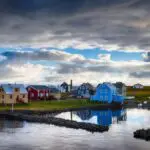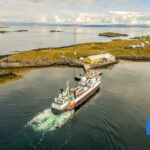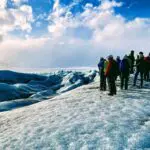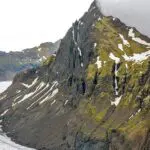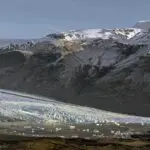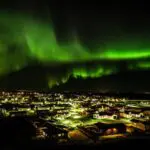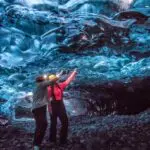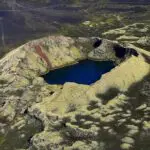Do you find both Icelandic nature and the Icelandic sagas interesting? We have created a route for you to drive where you visit stunning natural wonders and historic sites that bring Iceland’s rich past to life. From the ancient parliament site at Þingvellir to the dramatic waterfalls and black sand beaches of the south, each stop offers a unique glimpse into the history and folklore that define this remarkable region.
This interactive map provides a glimpse into the places associated with the Icelandic Sagas for those interested in delving deeper.
The Icelandic Sagas and Þingvellir National Park
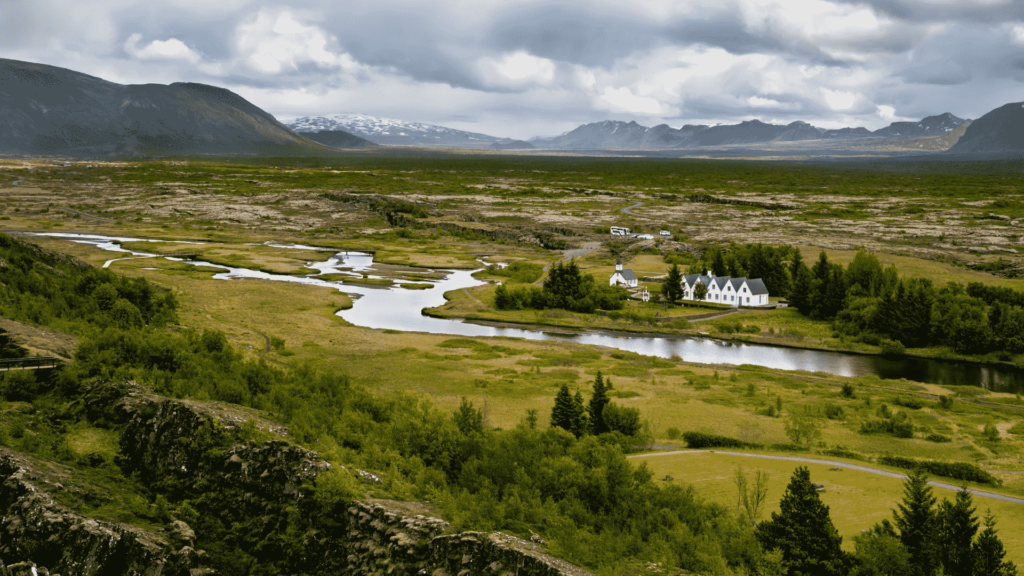
Þingvellir National Park, a UNESCO World Heritage site, is one of Iceland’s most significant historical locations. Situated about 40 kilometres northeast of Reykjavík, it is where the Alþingi, Iceland’s parliament, was established in 930 AD. Þingvellir is a place of political history and a site rich with natural beauty and geological wonder, lying at the boundary between the North American and Eurasian tectonic plates.
Þingvellir is where Icelanders gathered annually for nearly 800 years to create laws, settle disputes, and hold important meetings. This site is deeply intertwined with Icelandic sagas, particularly Njál’s Saga (Brennu-Njáls Saga).
Connection to Njál’s Saga
Njál’s Saga provides numerous references to events that took place at Þingvellir. Here are a few notable examples:
The Burning of Njáll and His Family: The saga narrates how the attackers tragically burn Njáll Þorgeirsson, his family, and his home at Bergþórshvoll. Following this event, many parties bring their disputes and legal battles to the Alþingi at Þingvellir for resolution.
Gunnar’s Outlawry: At Þingvellir, authorities declare Gunnar Hámundarson, a central character in the saga, an outlaw. His refusal to leave Iceland after being outlawed eventually leads to his death.
Flosi’s Trial: After burning Njáll and his family, Flosi Þórðarson, the leader of the burners, and his men face trial at Þingvellir.
Other Icelandic Sagas Connected to Þingvellir
Alþingi and Lögberg are mentioned in several Icelandic sagas, apart from Njál’s Saga, highlighting their significance as central locations for legal and political activities in medieval Iceland.
Ljósvetninga Saga details the feuds and alliances of the Ljósvetningar clan, with several important decisions and meetings taking place at Alþingi.
Fóstbræðra Saga: The story of the sworn brothers Þorgeir and Þormóðr often brings them to Alþingi, where they participate in legal proceedings and encounter various rivals and allies.
Bandamanna Saga: This saga revolves around the alliances and conflicts of eight chieftains, with Alþingi serving as a crucial backdrop for resolving disputes and forging agreements.
Laxdæla Saga: The saga narrates the history of the people of the Laxárdalur valley, with Alþingi being a central venue for settling legal matters and holding trials.
Gunnlaugs Saga Ormstungu: The saga of Gunnlaug Serpent-Tongue, a renowned poet and warrior, includes significant events at Alþingi, where he faces his rival, Hrafn.
Egils Saga Skallagrímssonar: This is one of the most famous Icelandic Sagas and follows the life of the warrior-poet Egill Skallagrímsson, with Alþingi appearing as a pivotal place for legal assemblies and dramatic confrontations.
Heiðarvíga Saga: This saga of the Heiðarvíga feud mentions Alþingi as a site where important legal disputes and battles are adjudicated.
Hrafnkels Saga Freysgoða: The story of Hrafnkell, a powerful chieftain, features Alþingi prominently as the location for trials and significant legal battles.
Sturlunga Saga: A compilation of sagas detailing the power struggles during the Age of the Sturlungs, the Sturlunga Saga frequently references Alþingi as the arena for major political and legal conflicts.
Þórarins Þáttur Ofsa: This short tale includes references to Alþingi as a place where pivotal decisions and actions unfold.
Kristni Saga: This saga, which chronicles the Christianization of Iceland, highlights Alþingi’s role in the historic decision to adopt Christianity in the year 1000.
Places to see at Þingvellir
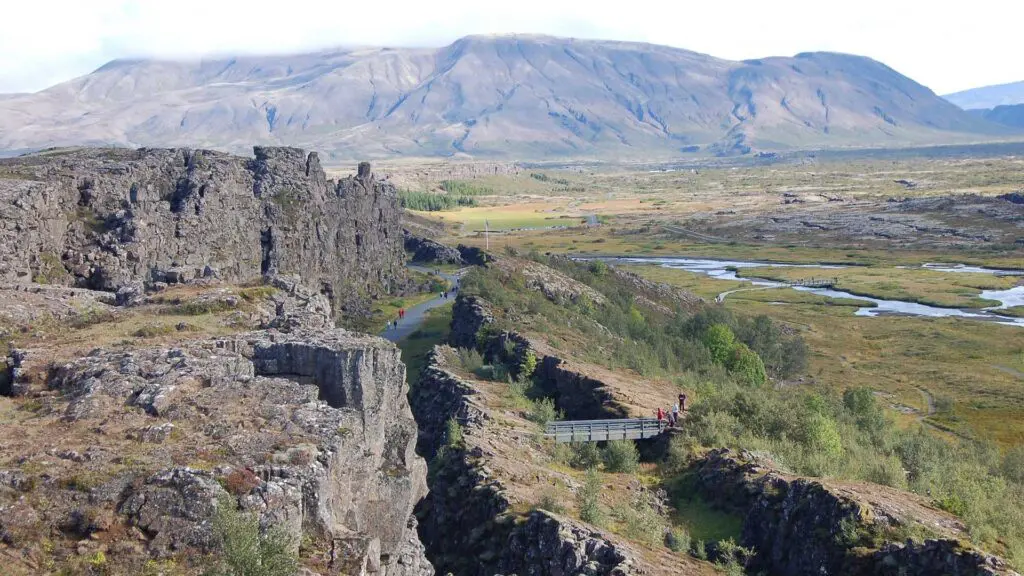
Almannagjá Gorge. Walk through the impressive Almannagjá Gorge, where you can see the continental rift between the North American and Eurasian plates. This unique geological feature also played a significant role in many saga events.
Lögberg (Law Rock). Although no one knows exactly where Lögberg is, people know its general location.This is the historic meeting place where chieftains and lawmakers gathered to discuss laws and make important decisions. Picture the scenes from Njál’s Saga as you take in the historical significance of this spot.
Öxarárfoss Waterfall. A short hike from the main visitor centre brings you to Öxarárfoss.
Drekkingarhylur (Drowning Pool). is a historically significant site located within Þingvellir National Park. This serene yet sombre pool in the river Öxará holds a dark place in Icelandic history. The authorities used it for executions during the 17th and 18th centuries.
The Icelandic Sagas and Hvolsvöllur
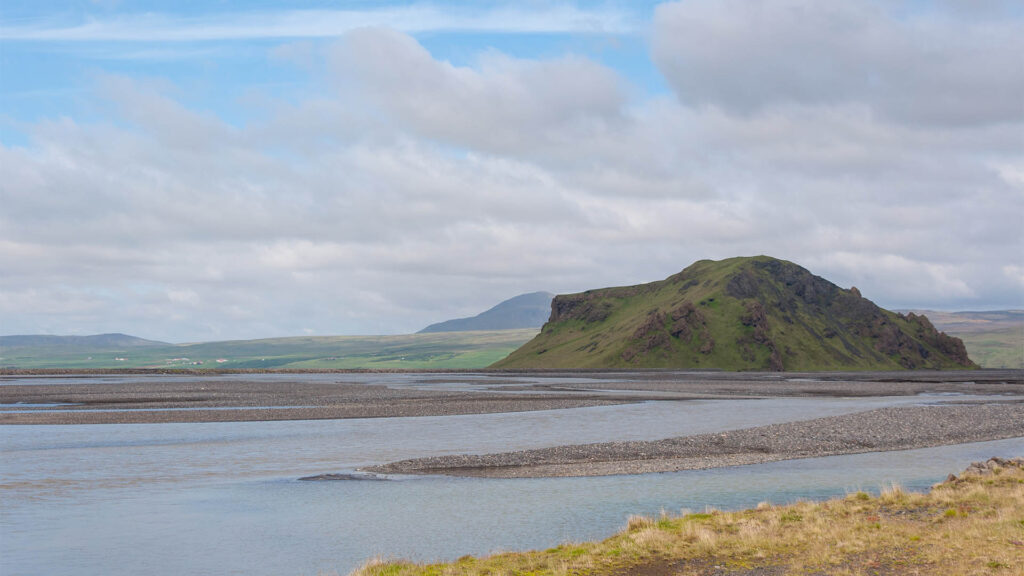
Continue your journey to Hvolsvöllur, a town deeply embedded in the lore of Njál’s Saga. This area is central to the narrative of one of Iceland’s most famous sagas. It chronicles the lives, conflicts, and legal battles of key characters like Njáll Þorgeirsson and Gunnar Hámundarson. Visiting Hvolsvöllur provides a unique opportunity to delve into the rich tapestry of medieval Icelandic life and legend.
Njál’s Saga Centre
At the heart of Hvolsvöllur lies the Njál’s Saga Centre, a dedicated museum that brings the saga to life through various exhibits and displays. The centre offers an immersive experience of the sagas world, providing educational and engaging content for visitors of all ages.
If you’re interested in exploring more about Njál’s Saga and visiting the locations featured in this epic story, we have written a detailed blog post just for you. Our post takes you through the key sites associated with the saga. It offers insights into their historical significance and how they relate to the dramatic events and characters of Njál’s Saga.
Seljalandsfoss Waterfall
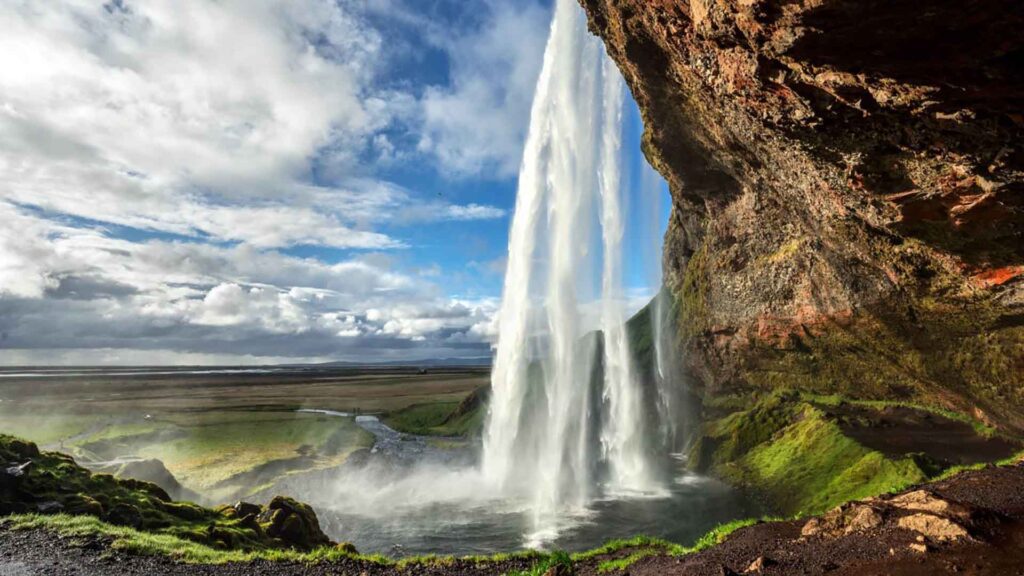
Just a short drive from Hvolsvöllur, you’ll find Seljalandsfoss, one of Iceland’s most famous and picturesque waterfalls. Known for its unique feature that allows visitors to walk behind the cascading water, Seljalandsfoss offers a truly unforgettable experience. The waterfall plunges 60 meters (197 feet) from the cliffs of the former coastline.
One of Seljalandsfoss’s most unique features is the footpath that leads behind the waterfall. This rare opportunity allows you to experience the power and beauty of the cascade from a completely different perspective.
Seljalandsfoss is a photographer’s dream. The picturesque scenery offers countless opportunities for stunning photos. Capture the waterfall from the front for classic shots, or venture behind for more dramatic and unique angles.
The Icelandic Sagas and Skógafoss Waterfall
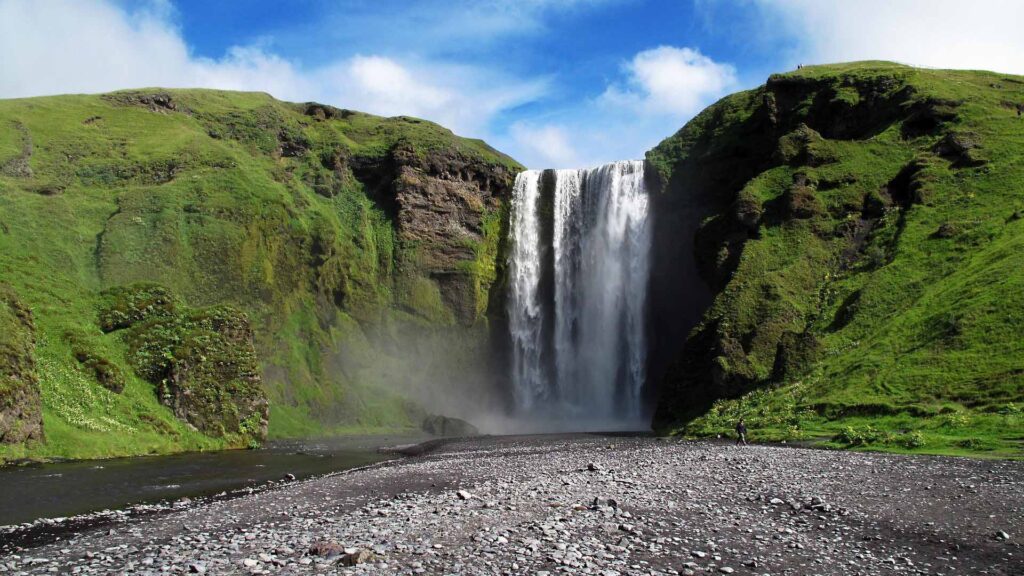
Next, head to Skógafoss, one of Iceland’s most iconic and breathtaking waterfalls. Towering at 60 meters (197 feet) and 25 meters (82 feet) wide, Skógafoss is a powerful and awe-inspiring sight. The waterfall is a natural wonder and steeped in local legend. According to folklore, Þrasi Þórólfsson, a Viking settler, hid a treasure chest behind the waterfall
A staircase of over 500 steps leads to the top of Skógafoss. It offers a breathtaking panoramic view of the surrounding landscape. From the top, you can see the river Skógá winding through the countryside and, on a clear day, even spot the Atlantic Ocean in the distance. The hike is moderately challenging but worth the effort for the stunning vistas.
Explore the Skógar Folk Museum
Just a short walk from Skógafoss, the Skógar Folk Museum offers a fascinating glimpse into Icelandic history and culture. The museum features traditional turf houses, artefacts from the Viking era, and exhibits on local heritage and folklore. It’s an excellent way to complement your visit to the waterfall with cultural enrichment.
The legend of Þrasi Þórólfsson
According to Icelandic folklore, Þrasi Þórólfsson was a formidable Viking who settled in the area near Skógafoss. He was known for his wealth and cunning, and as the story goes, he decided to hide his vast treasure to protect it from thieves and rivals.
Legend says Þrasi placed a large chest filled with gold and other valuables behind the powerful cascade of Skógafoss. The constant rush of water and the rocky terrain conceal the exact location of the chest, shrouding it in mystery. The legend claims that when the sun hits the waterfall at the right angle on sunny days, you can see a glint of gold from the chest.
Attempts to Retrieve the Treasure
Over the centuries, many have tried to retrieve Þrasi’s hidden treasure, but none have succeeded. The closest anyone came to finding the chest was when a local boy managed to hook one of the chest’s rings with a rope. As he pulled, the ring broke off, and the chest sank back into the hidden depths behind the falls. The ring, known as the “Þrasi Ring,” was kept as a prized relic and is said to have been placed in a local church for safekeeping.
Sólheimajökull Glacier
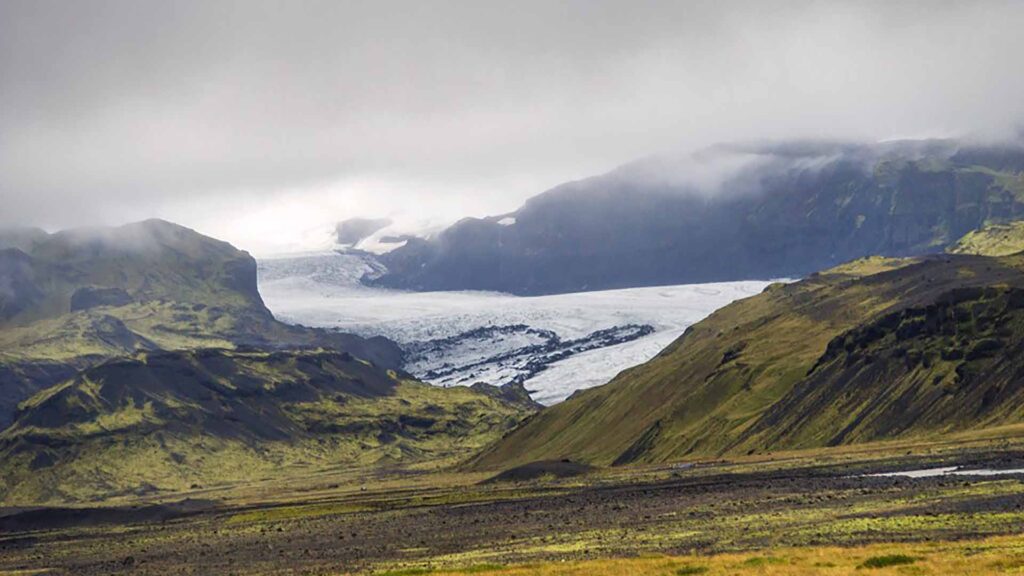
After exploring Skógafoss, continue your journey to Sólheimajökull Glacier, a breathtaking glacier tongue extending from the larger Mýrdalsjökull ice cap. This glacier is a prime destination for adventure seekers and nature enthusiasts. It offers a unique opportunity to experience Iceland’s glacial landscapes up close.
You must join a guided glacier hike to explore the icy terrain safely and learn about the glacier’s formation, history, and current state. Professional guides provide all necessary equipment and share their extensive knowledge of the glacier.
For those seeking an extra thrill, guided ice climbing tours are available. These tours allow you to scale the icy walls of the glacier, offering a challenging and rewarding adventure. No prior experience is necessary, as guides provide instruction and support throughout the climb.
Dyrhólaey Promontory
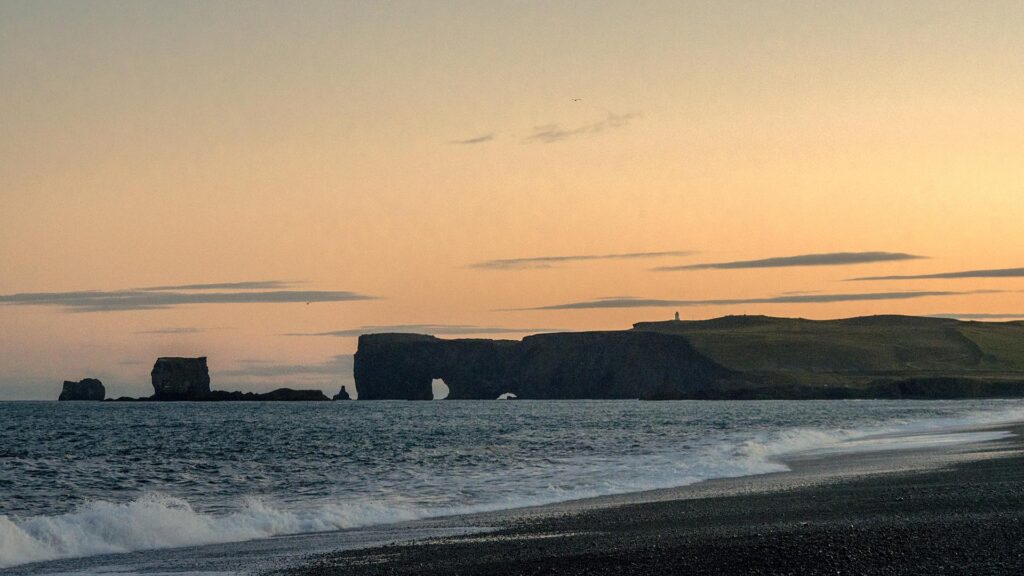
Now, we are nearing the end of the drive. The stop is Dyrhólaey (Icelandic for “door hill island”). It is a stunning promontory on Iceland’s south coast, near the village of Vík. Once an island formed by a volcanic eruption 100,000 years ago, it now stands 120 meters (390 feet) tall, crowned by the Dyrhólaey Lighthouse, built in 1927.
While often mistaken as Iceland’s southernmost point, that honour goes to Kötlutangi to the east, with Surtsey in the Westman Islands being the country’s southernmost point.
Dyrhólaey offers panoramic views: the Mýrdalsjökull glacier to the north, the Reynisdrangar lava columns to the east, and the coastline stretching towards Selfoss to the west. The promontory’s name comes from the massive black lava arch in the sea below.
A steep, newly paved road leads up to Dyrhólaey, where Atlantic puffins nest on the cliffs during summer.
Reynisfjara Black Sand Beach
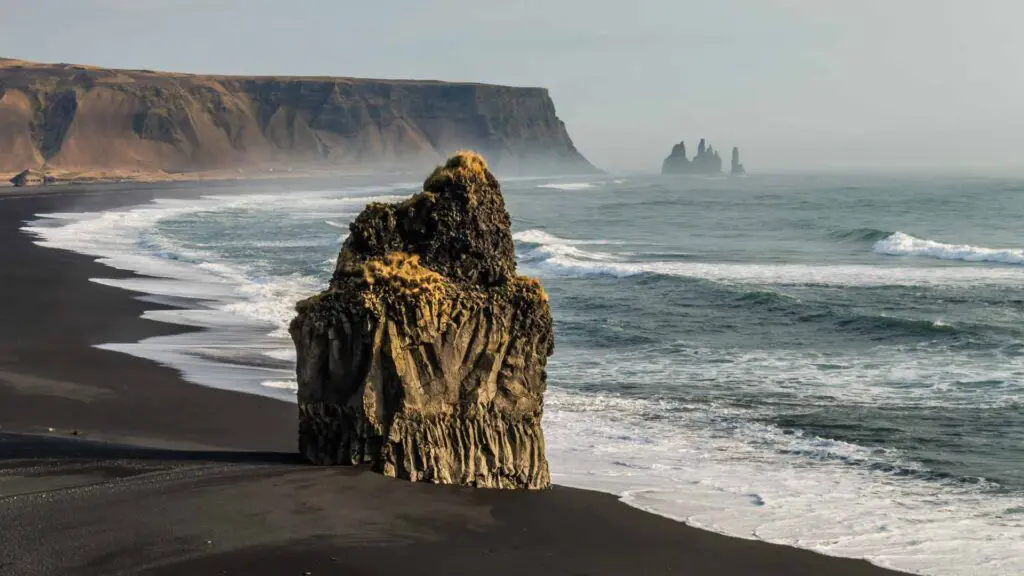
Reynisfjara Beach is famed for its dramatic scenery and striking black sand. Furthermore, imposing basalt sea stacks known as Reynisdrangar frame the beach, rising spectacularly from the Atlantic Ocean under the shadow of Reynisfjall mountain. Additionally, one of the beach’s standout features is its hexagonal basalt columns, formed by ancient volcanic activity. These columns create a natural, photogenic wall along the beach, perfect for exploration and climbing.
Local legend adds a mystical touch to Reynisfjara. The Reynisdrangar sea stacks were once trolls attempting to drag a three-masted ship ashore. They were turned to stone when dawn broke, now standing as eternal sentinels in the sea.
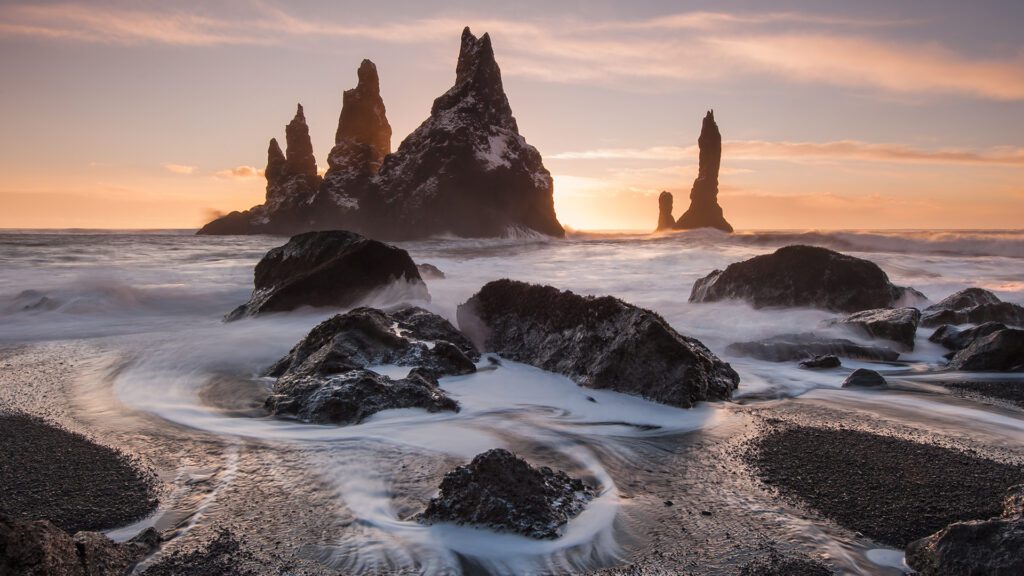
The black sand of the beach, a product of volcanic activity, contrasts sharply with the frothy waves of the ocean. However, visitors should be cautious of the beach’s notorious “sneaker waves.” These powerful and unpredictable waves can surge up the shore unexpectedly, so it’s essential to maintain a safe distance from the water and stay alert to tide conditions.
The Icelandic Sagas in Vík í Mýrdal
The final stop on your tour is the picturesque village of Vík í Mýrdal, the southernmost village in Iceland. Nestled between the sea and dramatic cliffs, Vík offers stunning views and a serene atmosphere. Additionally, one of the main attractions is the Vík i Myrdal Church, perched on a hill and providing panoramic views of the village and surrounding landscapes.

The region around Vík is rich in Icelandic saga history, particularly Njál’s Saga. In the saga, Dyrhólaey is mentioned as a landmark that characters pass by during their travels along the southern coast. Mýrdalsjökull glacier also features in the Icelandic saga, often referring to the harsh and unforgiving natural environment the characters must navigate.
Where to eat in Vík
Halldórskaffi. Located in the heart of Vík, this cozy restaurant offers a variety of Icelandic and international dishes, including delicious soups, burgers, and seafood. The relaxed atmosphere and friendly service make it a favourite among locals and tourists.
Suður-Vík. This charming eatery, set in a historic house, offers traditional Icelandic dishes and international cuisine. Enjoy hearty meals like lamb, fish, and vegetarian options while enjoying the stunning views of the surrounding landscape.
The Soup Company. Perfect for a quick and satisfying meal, The Soup Company specializes in hearty soups, stews, and bread. It’s a great spot to warm up after exploring the nearby beaches and cliffs.
Ströndin Bistro and Bar. With a menu featuring fresh, locally sourced ingredients, Ströndin offers a range of dishes from seafood to burgers. The bistro provides a cozy setting with excellent views of the black sand beaches.
Smiðjan Brugghús. A craft brewery and restaurant offering a selection of homemade beers and a menu focused on burgers and other comfort foods. It’s a great spot for a casual meal and to try some local brews.

